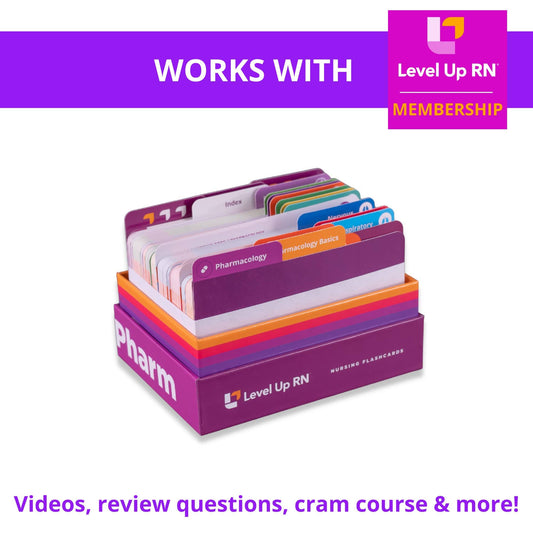When you see this Cool Chicken, that indicates one of Cathy's silly mnemonics to help you remember. The Cool Chicken hints in these articles are just a taste of what's available across our Level Up RN Flashcards for nursing students!
In this article, we cover a class of antilipemic medications called bile acid sequestrants, including a background on cholesterol; and the indication, mode of action, side effects, nursing care and patient teaching for bile acid sequestrants.
The Nursing Pharmacology video series follows along with our Pharmacology Flashcards, which are intended to help RN and PN nursing students study for nursing school exams, including the ATI, HESI, and NCLEX.
Pharmacology - Nursing Flashcards
Bile acid sequestrants, also known as bile acid resins or BARs, are a class of medications used to help lower cholesterol levels in the body. Two important medications to know in this class are colesevelam (Welchol) and cholestyramine (Questran).
Mode of action
Colesevelam (Welchol) and cholestyramine (Questran) work by binding to bile acids in the intestine, which helps increase excretion of cholesterol and brings down LDL levels.
Side effects
The key side effects of both colesevelam and cholestyramine include constipation and GI upset.
Patient teaching
When caring for a patient on bile acid sequestrants like colesevelam or cholestyramine, it’s important to advise the patient to increase their fiber and fluid intake to prevent the side effects of constipation. The medication should be taken with food and a full glass of water.
Drug interactions
These medications can interfere with fat-soluble vitamin absorption. Vitamins A, D, E, and K are called fat-soluble vitamins because they are soluble (dissolvable) in organic solvents and are absorbed and transported in a manner similar to that of fats.


